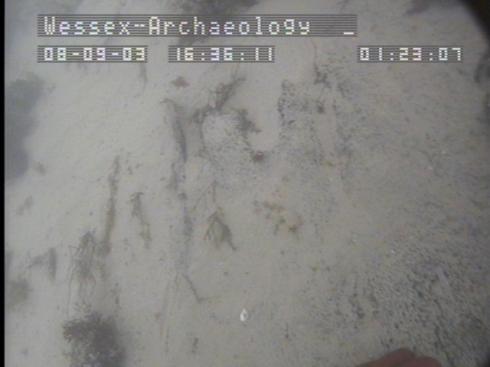Built by the French at Rochefort in 1744 to support French activities in the Americas and East Indies, L'Invincible was faster than any English ship of the time.
L'Invincible was a new design of a third rate 74 gun warship, with a longer hull capable of carrying its guns on two decks. It was captured by the English Fleet under Admiral Anson at the first battle of Finisterre in 1747. Renamed the Invincible, study of its design led to the building of the successful 'Invincible Class' of English third rates of the English Navy of the 18th and 19th centuries.
In 1758 England was preparing to send a fleet to America to capture the French fort of Louisbourg. The Invincible was among the vessels of this fleet gathered at St Helen's Roads off Portsmouth. As the fleet began to hoist anchors to depart, things began to go wrong for the Invincible. First its anchor would not clear, and then it fouled its bow. As the ship began to head north east across the Solent, its rudder jammed. Unable to steer, the wind pushed the warship onto Horsetail Sand.
The Invincible foundered on the sand for three days but all attempts to free it, including removing its guns, failed. Finally, its pumps broke and the ship rolled onto its port side and sank.
In 1979 a local fisherman, Arthur Mack, snagged his nets and brought up timbers. He asked local divers to investigate, and in the poor visibility they made out a wonderfully well preserved large wooden warship. Royal Navy divers then surveyed the wreck in 1980 and a 10 day excavation was made. Later in the year the wreck was designated a protected historic wreck under The Protection of Wrecks Act (1973).
Any doubts that remained about the identity of the wreck were dispelled in 1981 when an excavation undertaken under licence found a wooden tally bearing the inscription 'Invincible Flying Jib 26 x 26 No. 6'. A number of excavations were carried out on the wreck by Licensees in the years following its discovery.
In 1997 the MV Amer VED ran aground on Horse Sand damaging the Invincible. The site is now mostly buried and it is surveyed by a site Licensee, who monitors the sand levels on and condition of the wreck.
Wessex Archaeology Investigations
In 2003 Wessex Archaeology were asked by English Heritage to inspect the site of the Invincible as part of our contracted work for the Protection of Wrecks Act. Wessex Archaeology divers were asked to identify an anomaly lying south east of the main wreck noted by a previous survey and assess how exposed the wreck had become and whether the site was eroding or becoming buried.
Our divers recorded the position and made measurements of many of the main features on the wreck including the remaining cannons and areas of exposed ship timbers to enhance the accuracy of the existing site plan. Depth measurements were taken on the seabed around the wreck that can be used to monitor changes in the levels of sand around the wreck.
 You can download the full report of Wessex Archaeology’s Investigations as a .pdf below.
You can download the full report of Wessex Archaeology’s Investigations as a .pdf below.